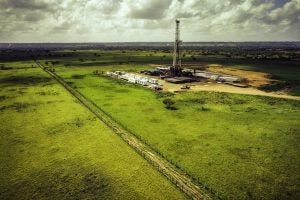There’s no avoiding it, business must lead on climate
By Tom Murray
 A few weeks ago, I attended the Earth Day Network’s Climate Leadership Gala in Washington, DC. Each year the event brings together more than 300 leaders from business, government and the NGO community to celebrate achievements in working towards a clean energy future. This year’s top honor, the Climate Visionary Award, was presented to Unilever CEO Paul Polman for his commitment to fighting climate change.
A few weeks ago, I attended the Earth Day Network’s Climate Leadership Gala in Washington, DC. Each year the event brings together more than 300 leaders from business, government and the NGO community to celebrate achievements in working towards a clean energy future. This year’s top honor, the Climate Visionary Award, was presented to Unilever CEO Paul Polman for his commitment to fighting climate change.
 Bold, passionate leadership like Polman’s is essential to tackling climate change while helping to create an economy that benefits us all. He understands that it’s not a choice between business and the environment. In fact, a thriving economy depends on a thriving environment.
Bold, passionate leadership like Polman’s is essential to tackling climate change while helping to create an economy that benefits us all. He understands that it’s not a choice between business and the environment. In fact, a thriving economy depends on a thriving environment.
Corporate sustainability leadership is now more important than ever. It’s clear that the Trump Administration’s efforts to roll-back environmental protections have thrust U.S. businesses into a critical leadership role on clean energy and climate change. (In fact, I’ll be talking with business leaders later today about how they are “responding to the new norm” at the Sustainable Brands Conference.)
A thriving economy depends on a thriving environment – why business must lead on climate – @tpmurray
Click To Tweet
Over the past 25 years at EDF we’ve seen corporate sustainability go from simple operational efficiencies to global supply chain collaborations; now it’s time to go further. Business must continue to raise the bar for sustainability leadership.
How?
- Set big goals, then tell the world
Thinking big and setting big goals, are required to drive big innovation and big results. Many large companies have demonstrated that if you commit to aggressive, science-based, sustainability goals, you can deliver meaningful business and environmental results. For example, Walmart, a longtime EDF partner with a track record of setting aggressive yet achievable climate goals, has recently set its sights even higher by setting a goal to source half of the company’s energy from renewable sources by 2025 and by launching Project Gigaton, a cumulative one gigaton emissions reduction in its supply chain by 2030.
And Walmart is not the only one. Other companies are stepping up as well – especially around commitments to go 100 percent renewable. Whether its online marketplace eBay committing to 100 percent renewable power in all data centers & offices by 2025, Tesco, one of the world’s largest retailers, announcing science-based targets and committing to 100 percent renewable electricity by 2030 or AB InBev committing to 100 percent renewable power, companies from diverse industries are taking a positive step forward.
While setting goals is a great first step, companies also need to communicate about the goals and progress. Not only does this increase transparency into a business’ sustainability efforts, it lets the world know that sustainability is core to its business. Publicly committing to sustainability goals sends a strong signal to suppliers, shareholders and customers.
- Collaborate for scale
In December 2016 I wrote about Smithfield Foods, the world’s number one pork producer, and its plan to cut greenhouse gas emissions 25 percent by 2025. The commitment was important both because Smithfield was the first major protein company to adopt a greenhouse gas reduction goal but also because the reductions would come from across Smithfield’s supply chain, on company-owned farms, at processing facilities and throughout its transportation network.
Smithfield understands that some environmental challenges are too big to handle on their own, and they know collaboration is the key to deliver impact at scale.
Other companies are also looking beyond their own supply chain and forming mutually beneficial partnerships. Take the recent partnership between UPS and Sealed Air Corporation, for example. The two companies have announced the opening of a Packaging Innovation Center in Louisville, Kentucky where they will solve the packaging and shipping challenges of e-commerce retailers but also drive new efficiencies while minimizing waste. This is a critical issue that is material to both their businesses, and by joining forces, are finding ways to solve an environmental challenge while improving their bottom lines.
- Publicly support smart climate policy
I can’t stress how critical it is right now for business leaders to move beyond their comfort zones and make their voices heard on smart climate and environmental policy. If you want to be a sustainability leader, continuing to hoe your own garden is no longer enough. You need to align your strategy, operations, AND advocacy. We know that environmental safeguards drive innovation, create jobs, and support long-term strategic planning.
The good news is leading voices are chiming in, from CEOs signing an open letter to Trump to more than 1,000 companies signing the Low-Carbon USA letter, in favor of environmental policies.
Some companies like Tiffany & Co. are also taking a public stand on their own. The company used its usual ad position in the New York Times to tell President Trump directly that Tiffany is backing policies that will lead us to a clean energy future.
The Way Forward
Taking the leadership mantle is never easy, but now is the time for every corporate leader to get off the sidelines and into the game. There’s plenty of room for more leaders like Polman who are ready to address climate change head-on, creating opportunities for economic growth, new jobs, and a cleaner future. Will your company be next?
Follow Tom Murray on Twitter: @TPMurray






